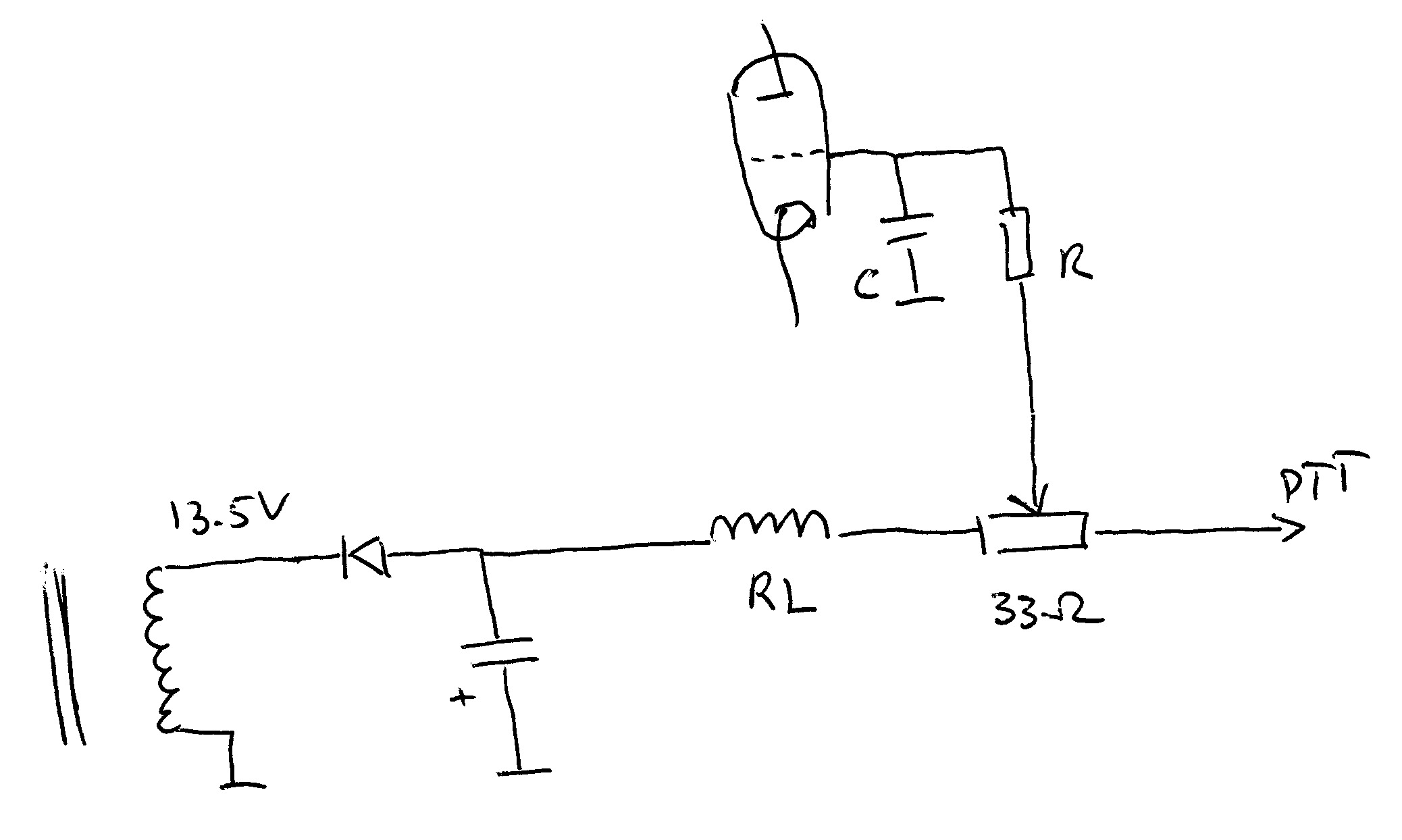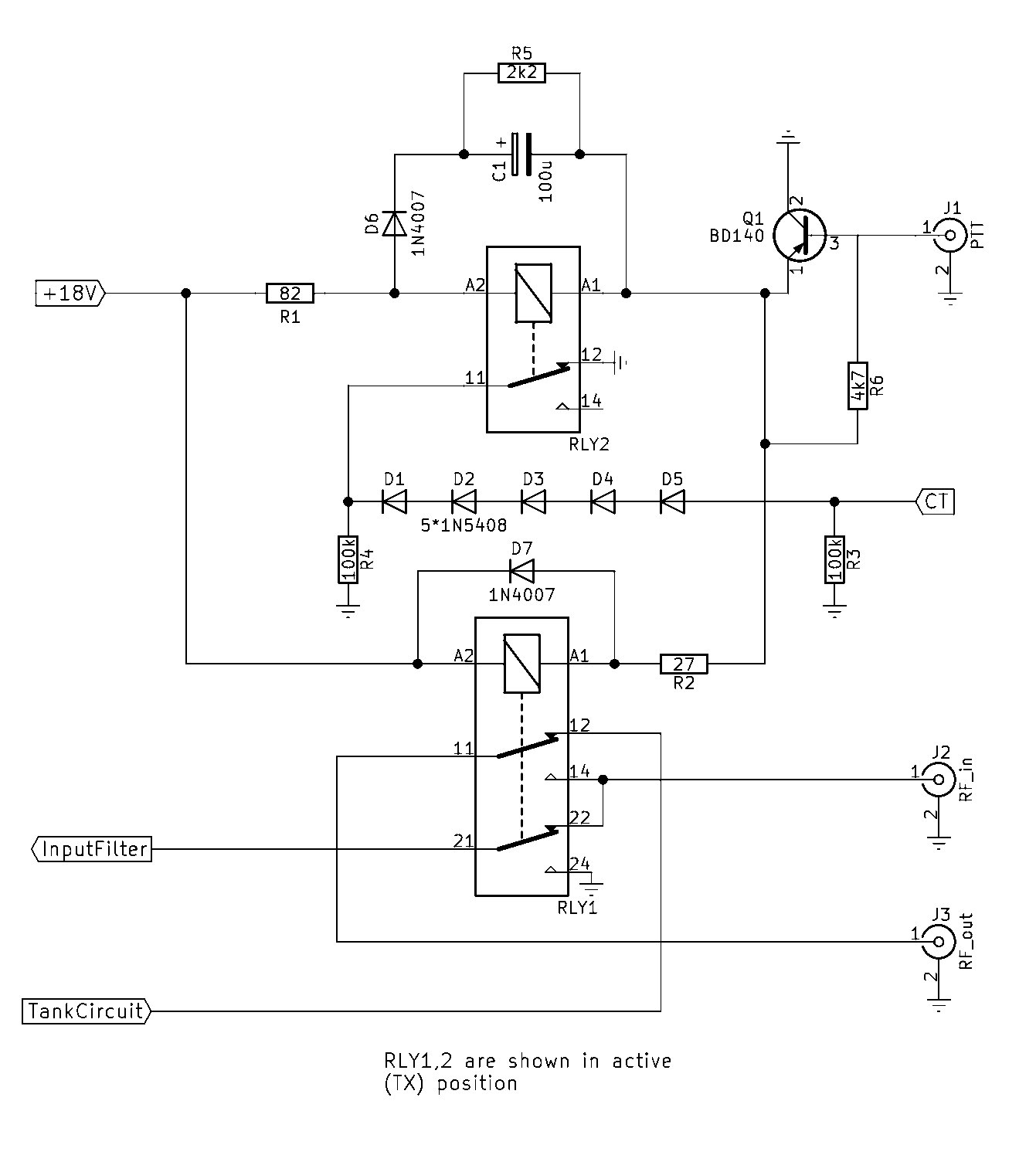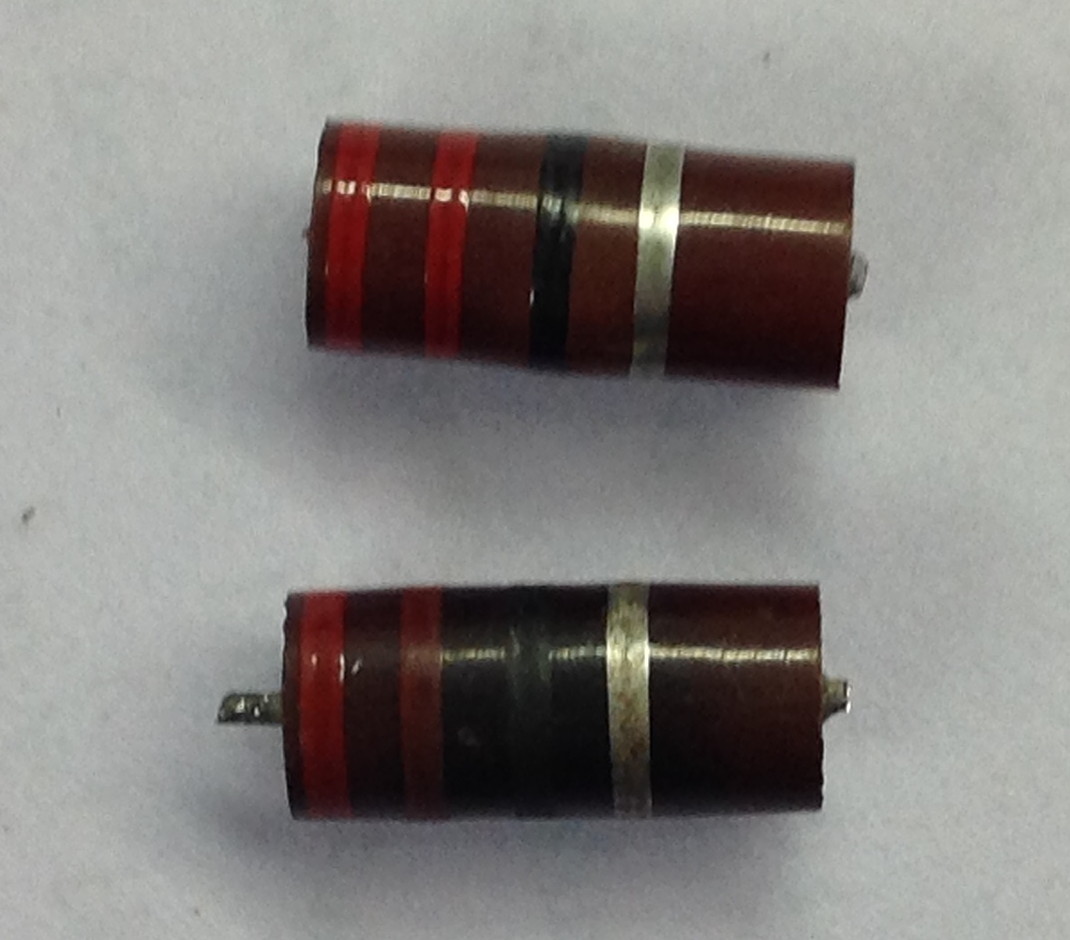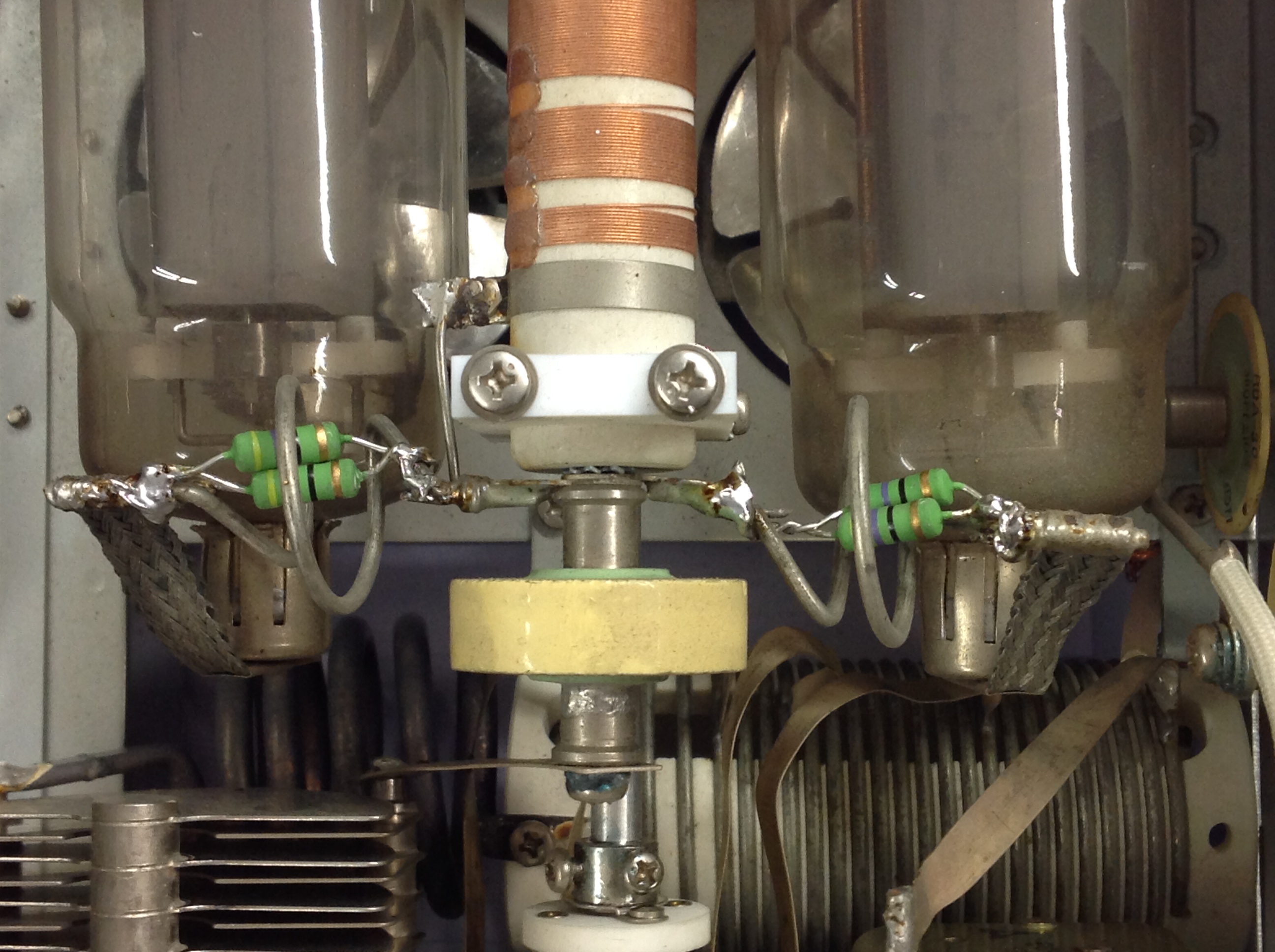
If the PTT contact is open, the grids are at about -18V, when PTT closes, all the current through the coil of the T/R switchover relay RL goes through the PTT contact, and the grids are at 2-3 Volts. The grid resistor R is 33 Ohms, and the grid capacitor C is 200pF in the original circuit.




